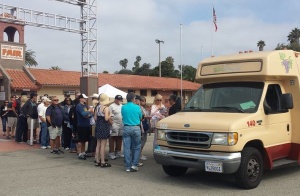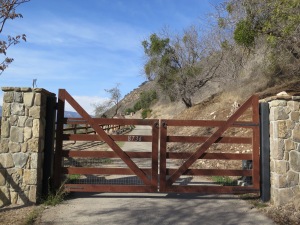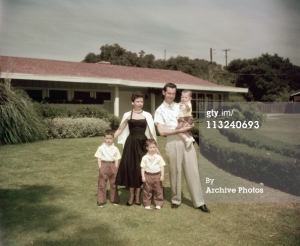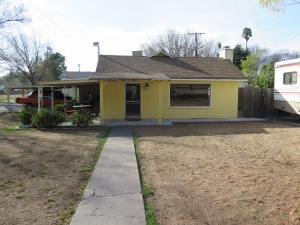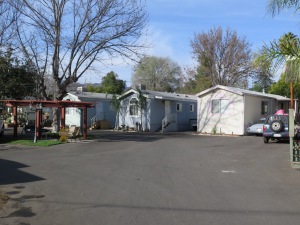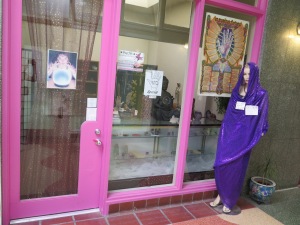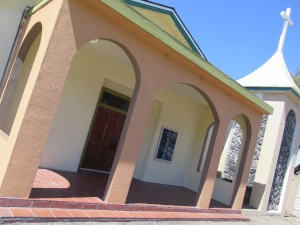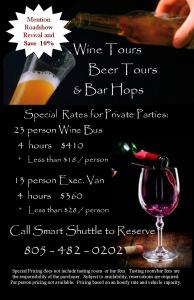Paraphrased from Johnny Cash and his Rings of Ojai Fire posted on March 4, 2013 by Living the Ojai Life
By MARK LEWIS
In 1961, Johnny Cash built his dream house in Casitas Springs.
This was his dream house. He had supervised the design himself, obsessing over every detail. Eventually the house had become like a prison to him, and now he was free. Yet here he was, on his way to Folsom to sing his old hit “Folsom Prison Blues” – a song inspired in part by his desperate desire to marry Vivian and live with her forever.
He finally made it back to San Antonio when his hitch was up. He married Vivian in 1954 and they settled in Memphis, where Johnny worked as a door-to-door appliance salesman. Then, in 1955, he and his band walked into the Sun Records studio to audition for Sam Phillips, the man who had discovered Elvis Presley. By July of that year, Johnny’s first single, “Cry, Cry, Cry,” was climbing the country charts. On July 30 he returned to the Sun studio to cut a follow-up single: “Folsom Prison Blues,” which hit the Top 10. Cash was just getting started. His next release, “I Walk the Line,” rose to No. 1 and crossed over to the pop charts. Johnny Cash was now a big star, and — like Elvis before him — he had outgrown Sun Records. In 1958 he signed with a major label, Columbia Records, and moved his growing family to Los Angeles.
“BY the time we left Memphis for California … we had three daughters and a marriage in bad trouble,” Cash wrote in his 2003 autobiography. He was becoming addicted to pep pills, and to the excitement of life on the road. Vivian was home taking care of 3-year-old Rosanne, 2-year-old Kathy and baby Cindy; she could not join Johnny on the road, nor did she care to. She wanted him to come home to her, like a normal husband.
To house his family in comfort, Cash bought Johnny Carson’s old house on Hayvenhurst Avenue in Encino.
Cash hoped to lure his parents west too, but Ray and Carrie Cash were not city folk, nor even suburban folk; they would not cotton to life in the San Fernando Valley. Then one day, while Johnny was out for a drive with his manager, he stumbled across the Ojai Valley. Here, he thought, was the perfect spot for his parents: an isolated, semi-rural paradise that still lay within easy driving distance of L.A. He bought a trailer park north of Oak View, renamed it the Johnny Cash Trailer Rancho, and asked Ray and Carrie to come out and run it for him. They agreed.
The trailer park was located on the west side of Ventura Avenue, just north of what is now Willey Street. (It’s still there; nowadays it’s called the Country Village Mobile Home Park.)
Ray and Carrie lived there in a comfortable wood-frame house, where they frequently played host to Johnny and Vivian and the girls, visiting from Encino. Before long, Johnny had decided to move his own family to the Ojai Valley, too.
Part of Ojai’s appeal was its pristine air quality compared to L.A. “Rosanne was allergic to the smog, coming home from school every day with tears running off her chin,” Johnny wrote. But clean air was not his only motivation. Cash was a country boy at heart; when not on the road with his band, he preferred to live where he could hunt and fish. The Ojai Valley was his kind of place — especially the west side communities that were home to so many former Dust Bowl migrants from Oklahoma and Texas. These folks worked in the oilfields, and on Saturday nights they crowded into Okie’s lounge in Foster Park to listen to country music and raise a little hell. (Cash had played this lively venue himself at least once, back in 1956 when it was still known as Moose Hall.)
Johnny also had friends in the area, like the “Rawhide” actor Sheb Wooley. There were also Cash’s Columbia Records label mates Johnny and Jonie Mosby, “Mr. and Mrs. Country Music,” who lived in Ventura and owned the popular Ban-Dar club on East Main Street.
“We did tour with him a lot,” Jonie told the Ojai Quarterly. (These days she is known as Jonie Mitchell, and lives in Santa Paula.)
Cash decided to move his business office to Ventura and build his dream house in the nearby mountains.
Somehow he ended up on a hill in Casitas Springs. Not everyone thought this was a good idea.
“I remember when Cash had his house built on the side of a mountain in Casitas Springs,” the country singer David Frizzell told the OQ. “My cousins lived at the foot of Johnny’s mountain in a trailer park, and I’d look up to Johnny’s place every time we’d go to visit.”
Frizzell, a former Ojai resident, said he used to wonder why Cash choose to live in Casitas Springs instead of Ojai. “I never asked him why, although I did wonder why, because Casitas Springs was not the nicest place to live.”
Perhaps that was exactly what attracted Cash to the place: It was an unpretentious little town of modest homes and working-class people. His kind of people.
“I think it reminded him of home, of Arkansas when he was grown up,” his daughter Kathy Cash told the OQ.
Be that as it may, Cash did not want to live in Casitas Springs, he wanted to live high above it. He bought himself 12 acres on that hill and built a steep, winding driveway up to the building site.
“I remember Dad taking us there after the road had been cut,” Kathy said. “And we’re on top of this hill going, ‘What? Why?’ I mean, there was nothing there.”
Johnny’s friend Walter “Curly” Lewis, a local contractor, filled in the blanks. Lewis built a five-bedroom house to Cash’s exacting specifications.
“At the building site, he lay down in the dirt and told Curly, ‘I want the master bathtub this big, and right here,’ ” Vivian wrote in her memoir, “I Walked the Line.”
“The house in Casitas was fabulous when it was finished,” she added. “It was a sprawling, 5,000-square-foot, ranch-style home with maid’s quarters and a huge, 15-by 30-foot kitchen that I loved.”
The house also featured an enormous built-in aquarium filled with exotic-looking fish. And the master bedroom featured a white carpet and a black ceiling, with silver flecks glittering here and there in the firmament.
“Dad wanted it to look like they were lying out under the stars at night,” Kathy said.
From her new living room window, Vivian gazed down upon her neighbors. The town’s population in 1961 was about 300. Before the Cashes moved in, its main claim to fame was that it was home of Howard Lee of Lee’s Frog Hatchery, which Life Magazine had once described as “one of the biggest bullfrog farms in the world.” Now Johnny Cash would be the biggest frog in this very small pond.
“I’m sure some people wondered why in the world we wanted to move from our comfortable neighborhood on Hayvenhurst to no-man’s-land,” Vivian wrote in her memoir. “But that’s what Johnny wanted, and Johnny always got whatever Johnny wanted. Besides, I was hopeful that getting him away from the city and into the country would settle him down. No more late-night partying. No more drinking. No more pills. No more whispered rumors of other women. I thought the change would do us good. I was more than ready for my little slice of heaven at the end of Tobacco Road.”
The Cashes moved in in the fall of 1961, shortly after the birth of their fourth daughter, Tara. Actually, it was Vivian and the girls who moved in; Johnny was on the road as usual. At a show in Dallas that December, he welcomed a new member to the cast of his touring “Johnny Cash Show.” This was June Carter, of the famous Carter Family. June was country-music royalty, born and bred, and — unlike Vivian — she was fully committed to the life of a touring performer.
Johnny, in his autobiography, recalled the Ojai Valley very fondly, but conceded that his life there did not work out as he had hoped.
“I loved it there,” he wrote. “It was beautiful land. ‘Ojai’ means ‘to nest.’ Nesting wasn’t what I did, though.”
Johnny often took his daughters to the lake, or to Foster Park for picnics, or to Oak View to visit their grandparents. Vivian often drove them up to Ojai to go shopping in the Arcade. But the Cashes didn’t mix much in Casitas Springs.
IN June 1966, Cash left to go on tour and never returned. In August, Vivian filed for divorce.
When the dust finally settled, she got the house in Casitas and Johnny’s share of the Purple Wagon Square mall in Oak View, an investment property he co-owned with Sheb Wooley. But Johnny retained the Johnny Cash Trailer Rancho, where his parents still lived. And so he returned to the Ojai Valley at least one more time, in January 1968, to visit Ray and Carrie. When he drove to LAX on Jan. 10, Ray came with him, to attend the Folsom concert. June was with him too; within three months, they would be married.
As for Vivian, she married Distin and moved to Ventura, where all four of her girls attended St. Bonaventure High School. Rosanne, who went on to become a country music star in her own right, recalls the move from Casitas as a positive turning point.
“It was as if, with that move, someone had opened all the windows and let the light and air inside,” Rosanne wrote in her memoir. “My mother almost immediately flourished, making a lot of friends, joining a garden club and a bowling league, taking dance lessons, playing card games, and hosting memorable parties.” Vivian died in 2005.
And the house? It’s still there, brooding over the (still) little town of Casitas Springs from behind the row of conical Cypress trees Johnny planted. Vivian sold the property to a family friend, Jack Newman, who lived there with his family for about 20 years before he sold it to the current owner, Montecito Fire Chief Chip Hickman.
But people still associate the place with Cash, especially since the 2005 release of the film “Walk the Line,” starring Joaquin Phoenix as Cash and Ojai’s own Reese Witherspoon as June Carter.
During the many years Newman lived there, he noticed a recurring phenomenon: Strangers periodically would pull off Ventura Avenue at Nye Road and point their cars up his long, winding driveway. They would drive all the way to the top, pause there for a moment or two, then turn around and leave without ever getting out of the car. They were trying to connect with an American legend.
“People would just drive up and drive back down again,” Newman said. “They just wanted to see where Johnny Cash lived.”

